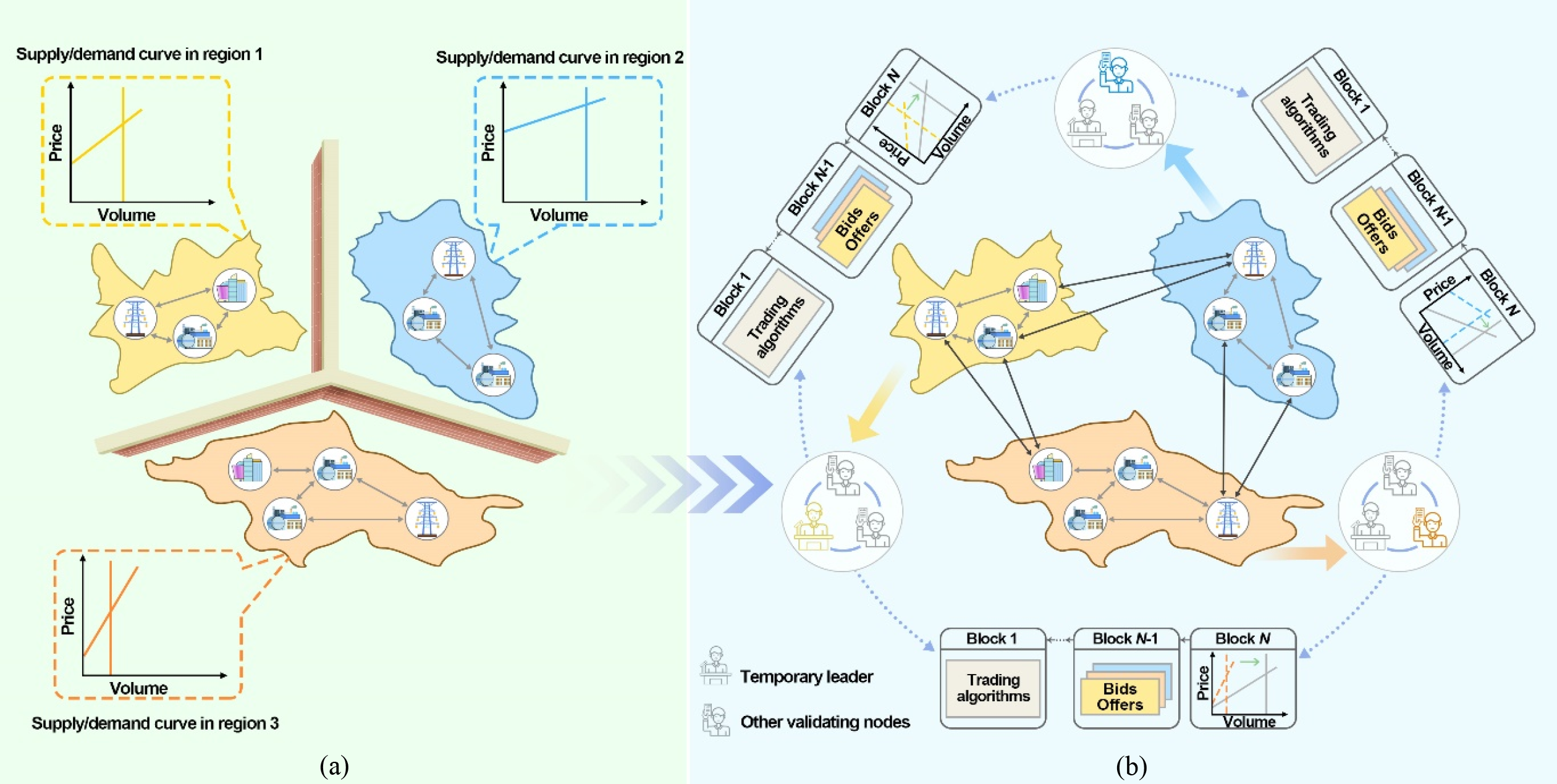Power energy systems are experiencing a structural change in recent years. On the one hand, with deregulation of the energy industry and cost drops of renewable energy technologies, a number of emerging players are entering energy systems. These players include photovoltaics (PVs), battery storages, smart buildings, virtual power plants, electric vehicle (EV) charging stations, etc [
1,
2]. On the other hand, synergy and coordination across multiple energy carriers, multiple energy balancing areas, and multiple organizations are increasing [
3,
4]. These changes lead to a more distributed structure of a power energy system [
5,
6], where multiple self-interested parties are expected to collaborate with each other. It can be challenging to manage such a system in a centralized manner. In some cases, a central authority may not exist and is unlikely to be established. In other cases, even if a central authority can be established, it may not be trusted and accepted by every participating party.







